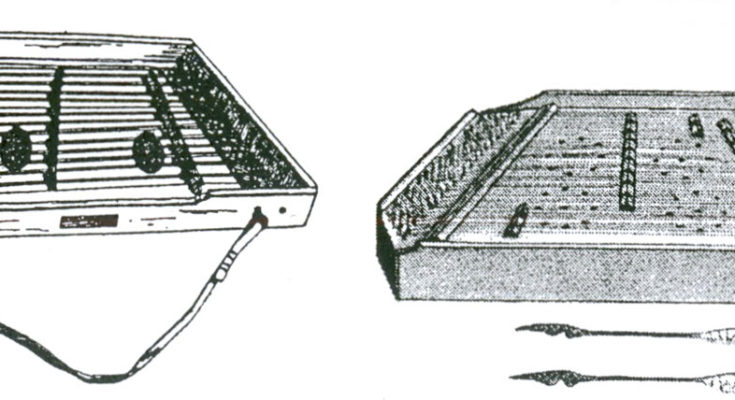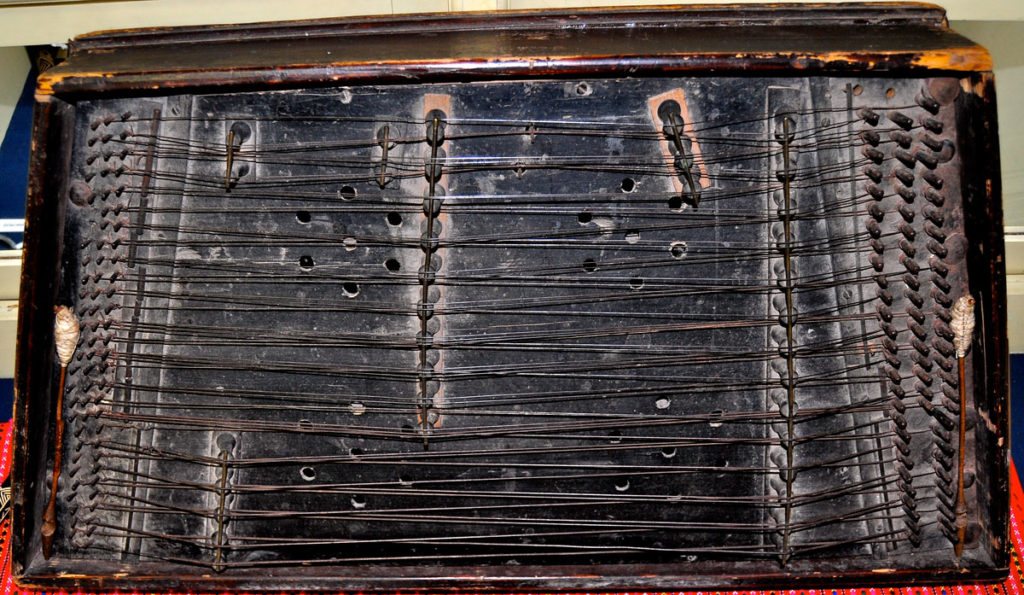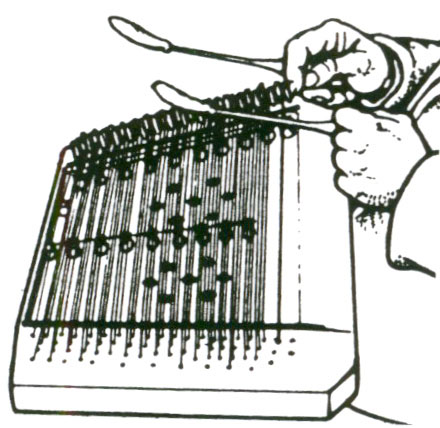CYMBALOM, HAMMER-DULCIMER
This relative of the zither originated in 13th century Persia and became known in Hungary in the 16th century. The instrument is used to make dance music together with a violin and clarinet. The small cymbalom without pedals was made by craftsmen for gypsy musicians. It was replaced by the large cymbalom which had four legs and pedals. Both cymbaloms are trapezoid shaped and their dimensions are 80 x 60 x 40 cm and 140 x 95 x 74 cm respectively. The sound-box is made of pine, the wrest plank of maple wood. The metal strings are played on with 35 cm long carved sticks. The curved tips are bare or wrapped with cotton for a different sound. The pedal-cymbalom was designed by József V. Schunda music instrument manufacturer of Budapest in the 1870-s. It is both a harmony instrument and a melodic solo (virtuoso) instrument.




